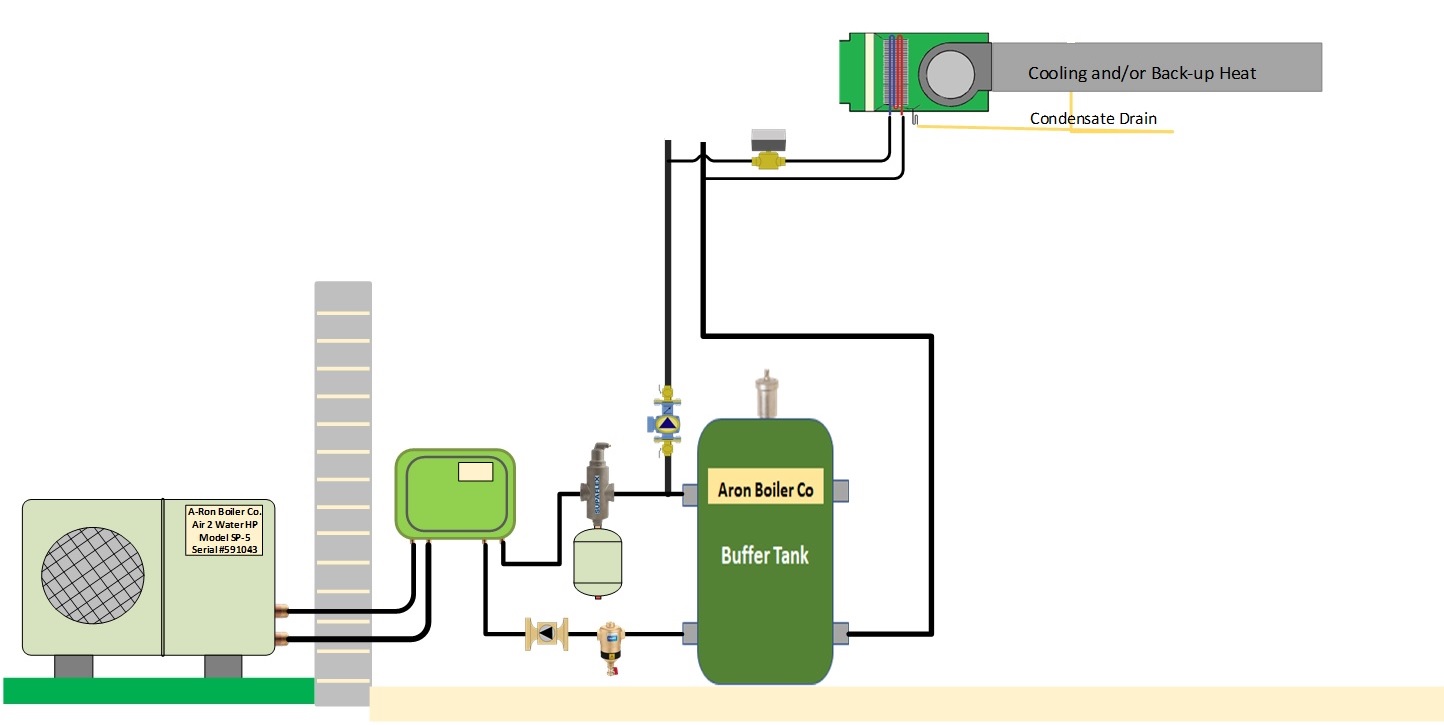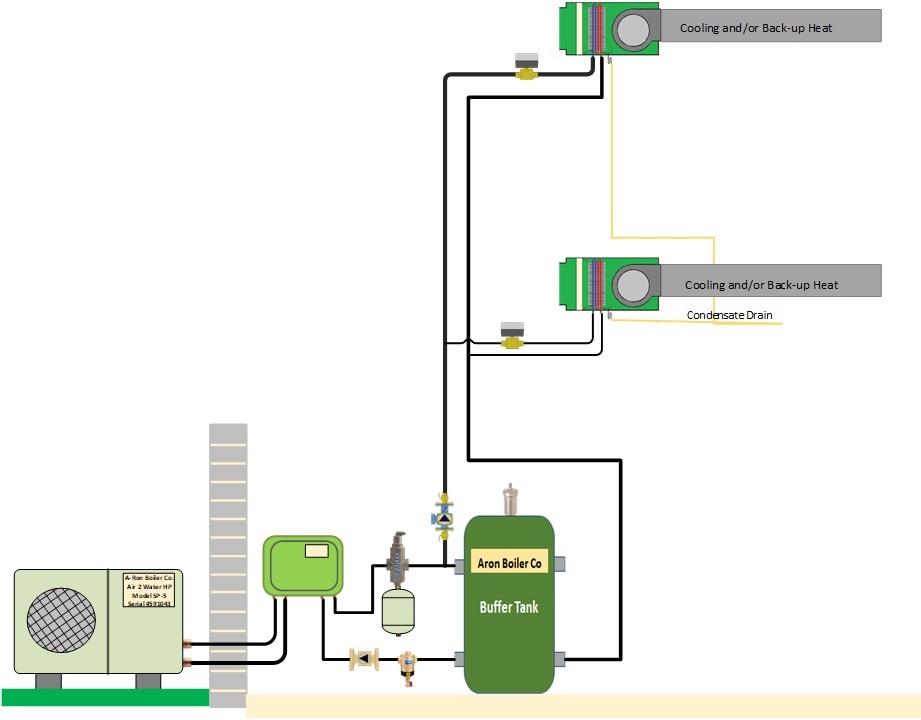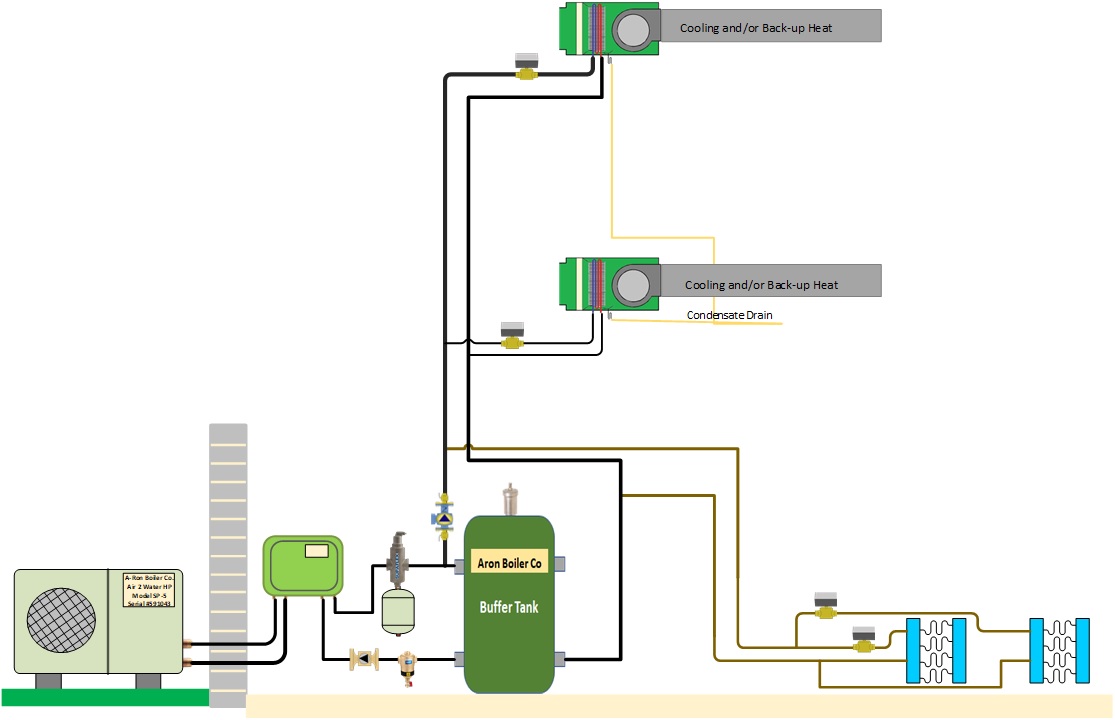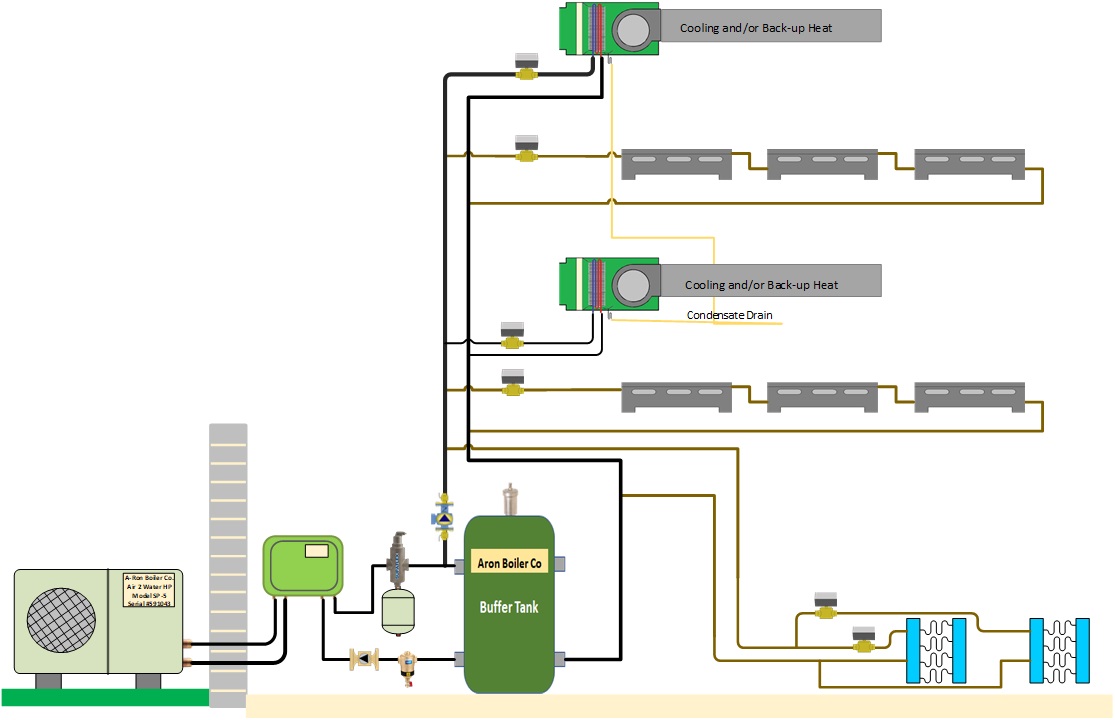Air to Water Heat Pump - Building Block Installations
Here is a checklist that is needed before you do the AWHP; (don't take shortcuts)
1. Where the homes' heat loss and heat gain can be reduced by air leak sealing, adding insulation, and windows/doors if the homeowner has not kept up with this throughout their home ownership
2. Do a complete Manual-J het loss. This is particularly important to choose the proper size AWHP due to the varying temperature of the supply water output at different OD air temperatures. The AWHP may be larger than the existing heat pumps
3. Verify the AWHP is of a varying output style
4. In most applications, you will need one OD unit even though there are multiple indoor units. One exception would be large homes
5. If using air handlers, you may decide to add electric back-up to the air handlers or use a boiler to boost water temperature when needed. (follow the manufacturer's instructions)

Eventually, the second heat pump will fail, you add the second air handler with a water coil instead of a refrigerant coil, but not a second OD unit. You will have to get water lines to the air handlers.

Staying on this subject, no hydronic heat system, let's assume the homeowner wants to finish off his basement to usable space or is going to add a garage, we have the option of adding radiant floor heat as another zone.

Another choice, if there is hydronic heat in the home already and the home also has one or multiple zones of air conditioning, you can do the hydronic heat connections at the time of original installation. As the a/c units fail and need to be replaced, add them on as needed. If an air conditioning unit fails and the decision is to use an AWHP, connect the air handler to the AWHP. The hydronic system can be connected simultaneously, utilizing the existing boiler as a backup on freezing days. You will save when heating on milder days with the heat pump. The other option, with an existing boiler and one of the a/c units failing, is to leave the hydronics system alone. The boiler can be connected to the AWHP either next year or when it fails. My choice would be to use the AWHP on milder days and extend the boiler life when not used as heavily.

I will add that if your company is not into solar photovoltaic, today is the time to consider this expansion to your company, especially if you are doing new construction. This is a newer and rapidly growing industry that can add an income stream to your bottom line.
